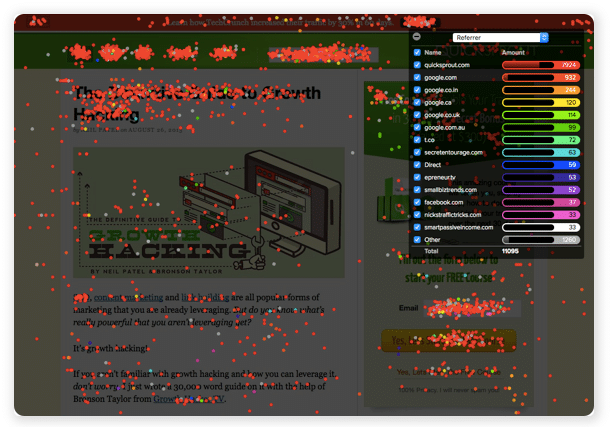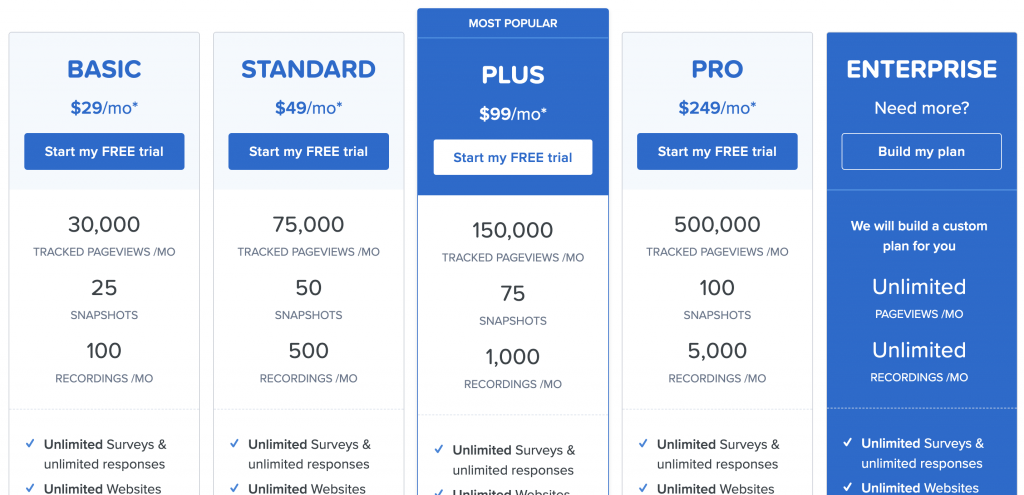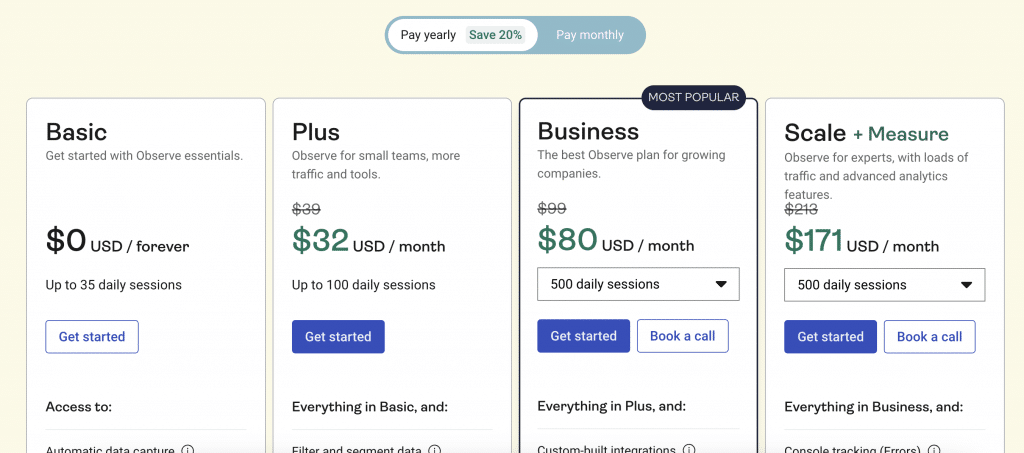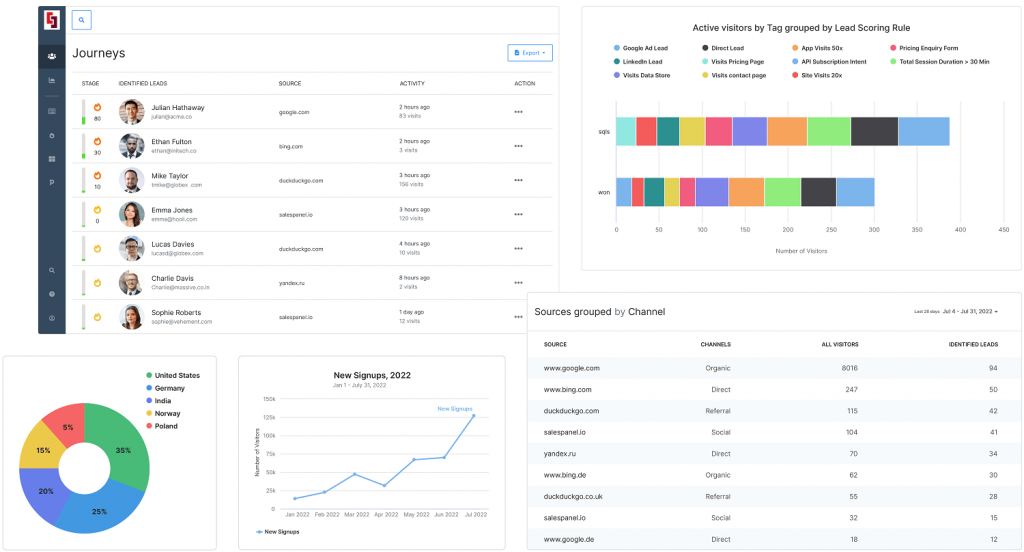Hotjar vs CrazyEgg: Picking the Right Tool for Your Business
Reading Time: 7 minutes
In today’s digital landscape, understanding user behavior and optimizing websites for better engagement and conversion is more critical than ever. To stand out and thrive, it’s essential to create an engaging, user-friendly experience on your website. But with so many tools to choose from, how do you pick the right one? Enter our in-depth comparison of two popular heatmap and user behavior analysis tools: CrazyEgg and Hotjar. We’ll dig into what each tool offers and highlight their key differences, so you can make an informed decision on the best fit for your website.
CrazyEgg and Hotjar are widely recognized for their comprehensive feature sets, designed to help website owners and marketers analyze user interactions and identify areas for improvement. By offering features such as heatmaps, scroll maps, click maps, and user recordings, these tools aim to provide a deeper understanding of user behavior patterns, ultimately enabling you to optimize your website’s design, content, and functionality.
The importance of tools like CrazyEgg and Hotjar cannot be overstated. As competition in the online space continues to grow, it’s crucial to have a solid understanding of how your users interact with your website. Analyzing user behavior can help you make informed decisions about your website’s layout, call-to-actions, and overall user experience, leading to higher engagement, better conversions, and ultimately, more satisfied users.
In this article, we’ll break down both products and help you create the right tracking setup for your business. So, let’s get started!
What is Hotjar?
As a product experience insights tool, Hotjar provides users with a combination of behavior analytics and valuable feedback data. This versatile platform serves as a complementary resource to insights gathered from traditional web analytics tools like Google Analytics and Mixpanel, as well as customer journey trackers like Salespanel. Hotjar offers an array of powerful tools such as heatmaps, session recordings, and surveys, ensuring a comprehensive understanding of user experiences from a third-party perspective.

What is CrazyEgg?
CrazyEgg is a reliable tool designed to assist with website optimization by offering valuable insights into user behavior. With an array of features such as heatmaps and session recordings, this platform enables you to better understand how visitors interact with your website. By utilizing CrazyEgg’s insightful analytics, you can identify areas needing improvement and enhance your website’s design and functionality. As a result, you’ll be able to create a more engaging and user-friendly experience for your audience.

Hotjar vs CrazyEgg: Pricing
When picking between similar tools, it is important to evaluate the pricing structure to ensure you get the most value for your money. We’ll examine the pricing of both Hotjar and CrazyEgg in greater detail to help you make an informed decision based on your needs.
CrazyEgg Pricing:
CrazyEgg offers a 30-day free trial, which allows you to explore the tool’s capabilities without any financial commitment. Once you decide to move forward, you can choose from the following plans:
- Basic Plan: At $24 per month, this plan includes 30,000 tracked pageviews and allows for up to 100 recordings per month. It’s ideal for small businesses and individuals who want to start optimizing their website without a significant investment.
- Standard Plan: Priced at $49 per month, this plan includes 75,000 tracked pageviews and allows for up to 500 recordings per month. This plan offers a greater level of insights, making it suitable for growing businesses.
- Plus Plan: For $99 per month, you’ll receive 150,000 tracked pageviews and up to 1,000 recordings per month. This plan caters to medium-sized businesses that require more comprehensive data and insights.
- Pro Plan: At $249 per month, this plan includes 500,000 tracked pageviews and allows for up to 5,000 recordings per month. It’s designed for large businesses and enterprises with high-volume traffic and more complex optimization needs.

Hotjar Pricing:
Hotjar offers a free forever plan called “Hotjar Basic,” which tracks 36 daily sessions. This plan is ideal for those who want to try out the tool without any time constraints or initial investment.
For those who need more advanced features, Hotjar offers the following paid plans:
- Plus Plan: Starting at $32 per month (billed annually), this plan includes 10,000 pageviews per day, unlimited recordings, heatmaps, and surveys. It’s suitable for small businesses and individuals who want access to more features and higher data limits.
- Business Plan: The Business plan is tailored for larger organizations with more extensive data requirements. Pricing starts at $99 per month (billed annually) for up to 20,000 pageviews per day. The plan offers unlimited recordings, heatmaps, surveys, and additional features such as advanced targeting and multiple team members. Prices scale based on the number of daily pageviews required.
- Scale Plan: This plan starts at $213 per month (billed annually) and includes 20,000 pageviews per day, unlimited recordings, heatmaps, and surveys. It caters to larger businesses and enterprises with more demanding data and analysis requirements.

Feature Comparison: CrazyEgg vs Hotjar
Let’s dive into a comprehensive feature comparison of these two popular heatmap and user behavior analysis tools.
Heatmaps, User Session Recordings, and A/B Testing:
Both CrazyEgg and Hotjar offer heatmaps, user session recordings, and A/B testing capabilities, providing you with essential insights into user interactions and enabling you to optimize your website for better engagement and conversion.
Scrollmaps:
CrazyEgg’s scrollmaps reveal how long visitors spend on specific page elements, allowing you to identify which sections hold their attention the most. In contrast, Hotjar shows how far a visitor scrolls down the page, offering a more general understanding of the user’s scrolling behavior.
Mouse Movements and Click Tracking:
Hotjar tracks both mouse movements and clicks, offering a comprehensive view of user behavior and allowing you to identify potential areas of confusion or interest. On the other hand, CrazyEgg focuses primarily on click tracking, providing insights into the most popular areas and buttons on your site.
Direct User Feedback:
Hotjar offers tools to collect direct feedback from users, such as surveys and polls, which can help you understand their intentions, needs, and issues with your website. This feature is particularly useful for making informed decisions about your site’s content, design, and functionality based on user feedback.
Tracking Specific Users:
While Hotjar excels in providing heatmaps and behavior analytics for a general user base, CrazyEgg may be better suited for tracking specific users or segments, such as those identified through tools like Salespanel. This can help you gain a deeper understanding of the behavior patterns of your target audience or specific user groups.
Both CrazyEgg and Hotjar offer robust feature sets that cater to different needs and preferences. CrazyEgg may be a better fit for those interested in tracking specific users and gaining insights into visitor engagement on page elements, while Hotjar excels in providing a comprehensive view of user behavior and direct user feedback.
Integration Comparison: Hotjar vs CrazyEgg
Let’s examine the integration capabilities of Hotjar and CrazyEgg. Both tools integrate well with other sales, marketing, and analytics tools.
Hotjar Integrations:
Hotjar offers a variety of integrations with popular platforms, making it easy to incorporate it into your existing workflow. Some noteworthy integrations include:
Google Analytics: Combine Hotjar’s behavioral data with Google Analytics’ quantitative data for a comprehensive understanding of your website’s performance.
Google Tag Manager: Easily deploy Hotjar’s tracking code using Google Tag Manager.
WordPress: Integrate Hotjar with your WordPress site for seamless heatmap and user behavior analysis.
Shopify: Add Hotjar to your Shopify store to optimize user experience and boost conversions.
Wix: Incorporate Hotjar into your Wix website to better understand user behavior and make informed improvements.
CrazyEgg Integrations:
CrazyEgg also offers a range of integrations with popular platforms to ensure a smooth experience for its users. Some notable integrations include:
Google Analytics: Sync CrazyEgg with Google Analytics to gain a deeper understanding of user behavior and website performance.
Google Tag Manager: Deploy CrazyEgg’s tracking code easily through Google Tag Manager.
WordPress: Integrate CrazyEgg with your WordPress site to analyze and optimize user interactions.
Shopify: Enhance your Shopify store’s user experience by incorporating CrazyEgg’s insights.
Squarespace: Seamlessly add CrazyEgg to your Squarespace website to analyze visitor behavior and optimize your site.
While there may be some differences in the specific platforms each tool integrates with, both tools provide the essential integrations required for most users. Integrations wouldn’t be a deal breaker, plus you can use API from both tools to make integrations that are not natively available.
Disadvantages: Hotjar vs CrazyEgg
While both Hotjar and CrazyEgg offer a wealth of features and benefits, it’s essential to be aware of their limitations as well. In this section, we’ll explore the disadvantages of both products and compare them to help you make an informed decision.
Disadvantages of Hotjar:
Limited CX Solution: Although Hotjar combines multiple UX tools in one platform, it lacks a comprehensive customer experience (CX) solution, potentially leaving you with gaps in understanding the overall customer journey.
Feedback Analysis and Reporting: Hotjar doesn’t offer a robust feedback analysis and reporting system, which can make it challenging to derive actionable insights from the feedback collected through its surveys and polls.
JavaScript Conflicts: Some websites’ JavaScript libraries may conflict with Hotjar’s JavaScript files, leading to compatibility issues and impacting the accuracy of the data collected.
Disadvantages of CrazyEgg:
No Feedback Widgets: Unlike Hotjar, CrazyEgg does not provide feedback widgets, limiting your ability to collect direct user feedback and understand their intentions or issues with your website.
API Access: CrazyEgg doesn’t offer access to its API, which can be a disadvantage for users who want to build custom integrations or extract data for further analysis.
Click Tracking vs Mouse Movement Tracking: While CrazyEgg records clicks, it doesn’t track mouse movements like Hotjar does. This limitation means you may miss out on important insights into user behavior and interactions on your website.
Both Hotjar and CrazyEgg have their disadvantages, with Hotjar lacking a comprehensive CX solution and robust feedback analysis, while CrazyEgg misses out on feedback widgets and mouse movement tracking. However, your choice between the two tools should depend on your specific needs and priorities.
Trivia: Salespanel as an alternative
Salespanel is a customer journey tracking software tailored for B2B businesses. It effectively connects customer journeys to individual user records, providing a comprehensive view of user interactions. With the ability to automatically capture leads from any webform tool without the need for integration, Salespanel streamlines tracking connecting both past and future behavioral data to user records. Additionally, it offers reports vital for B2B businesses, aiding in attribution and analytics. If you’re seeking a customer journey tracking solution that caters specifically to B2B businesses, Salespanel is a strong contender.

Conclusion
Selecting the right heatmap and user behavior analysis tool depends on your specific needs and priorities. CrazyEgg is ideal for tracking specific users and visitor engagement on page elements, while Hotjar excels in providing comprehensive user behavior insights and direct feedback. For B2B customer journey tracking, consider Salespanel, which connects customer journeys to individual user records.
When choosing between these tools, evaluate your requirements and consider pricing, features, and integrations. By selecting the right tool, you’ll optimize your website and achieve better results.
Sell more, understand your customers’ journey for free!
Sales and Marketing teams spend millions of dollars to bring visitors to your website. But do you track your customer’s journey? Do you know who buys and why?
Around 8% of your website traffic will sign up on your lead forms. What happens to the other 92% of your traffic? Can you identify your visiting accounts? Can you engage and retarget your qualified visitors even if they are not identified?
